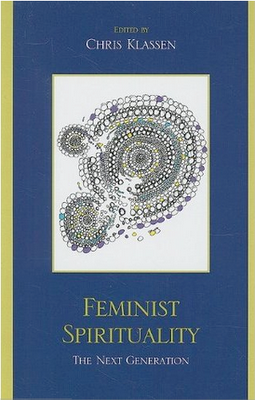Feminist Spirituality: The Next Generation

Feminist Spirituality: The Next Generation uses the publication of Manifesta: Young Women, Feminism, and the Future by Jennifer Baumgardner and Amy Richards in 2000 as its point of departure. The co-authors embodied a third wave of feminist activism, but according to Chris Klassen, that they neglected new forms of feminist spirituality provides a rhetorical opening for a book such as this one that tries to capture a generational shift in feminist spiritual practice. The narrative the editor supplies, however, is a narrowly construed one. Mary Daly, as second wave icon, rejects traditional Christian theology, and Cynthia Eller’s work in the early 1990s helps to crystallize a movement in “contemporary Paganism and Feminist Goddess Worship” that grew out of North American spiritual experimentation in the 1960s and early 1970s.
As Baumgardner and Richards began teaching forms of activism and encouraging and re-energizing feminists of all ages, a contrapuntal phenomenon—a feminist impulse that turns inward rather than outward—exploded in our consciousness, especially because of the development of sites of worship on the web. At a conference at which these co-authors spoke, I asked whether feminism might not ultimately become a discrete religious practice—a query dismissed by those for whom feminism is essentially a political practice and also rejected by those for whom feminism is a force for change within an established religious tradition.
One of the remarkable features of this blog is the chronicling of both strands, interwoven and yet separate, in feminist thought. The growth in scholarship connected to feminist spiritual practice has been particularly remarkable, notably Danya Ruttenberg’s brilliant collection The Passionate Torah about feminism and its challenges to Judaism, Rosemary Ruether’s comprehensive study Goddesses and the Divine Feminine, and a host of books representing women’s spiritual struggles both within and without established religious traditions.
In that context, Feminist Spirituality disappoints in its reductiveness. It identifies Paganism and Goddess Worship as centrally defining “third wave” feminist spirituality. Sarah Marie Gallant contributes the first essay, essentially a review of the writings of Carol P. Christ and Starhawk. Catherine Telford-Keogh uses the tools of queer theory to help reclaim witchcraft as a part of her spiritual practice. Anna Mercedes and Jennifer Thweatt-Bates reflect on the influence of Donna Haraway’s “Cyborg Manifesto” (1985) as a harbinger of third wave spiritual practice. Gene Meldazy and Kate McCarthy reflect on the emergence of popular culture as a part of spiritual practice.
The essays, by and large, are predictable within the framework Klassen provides and offer neither the original insight nor the comprehensiveness to represent an important contribution to an amazingly fruitful discourse.